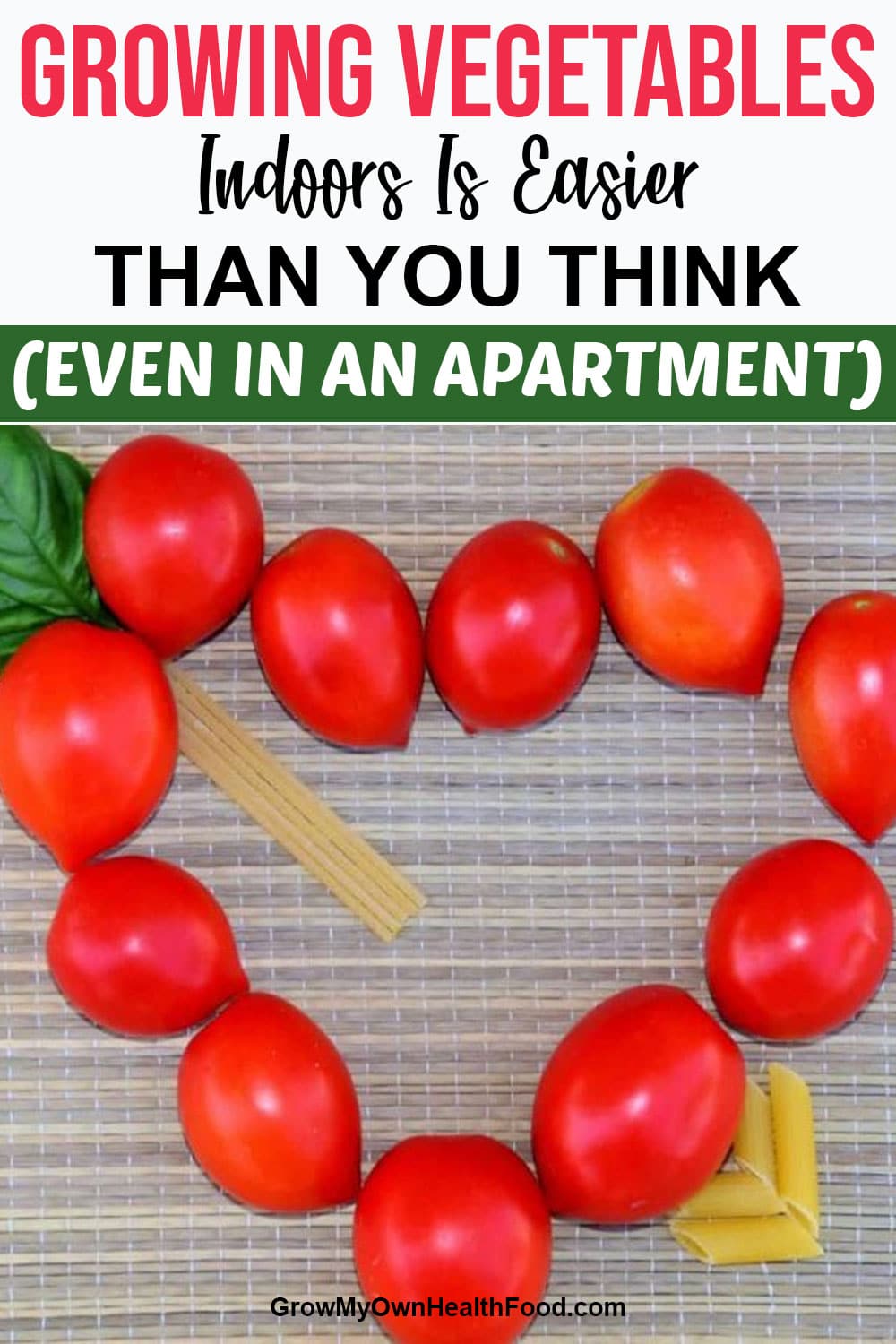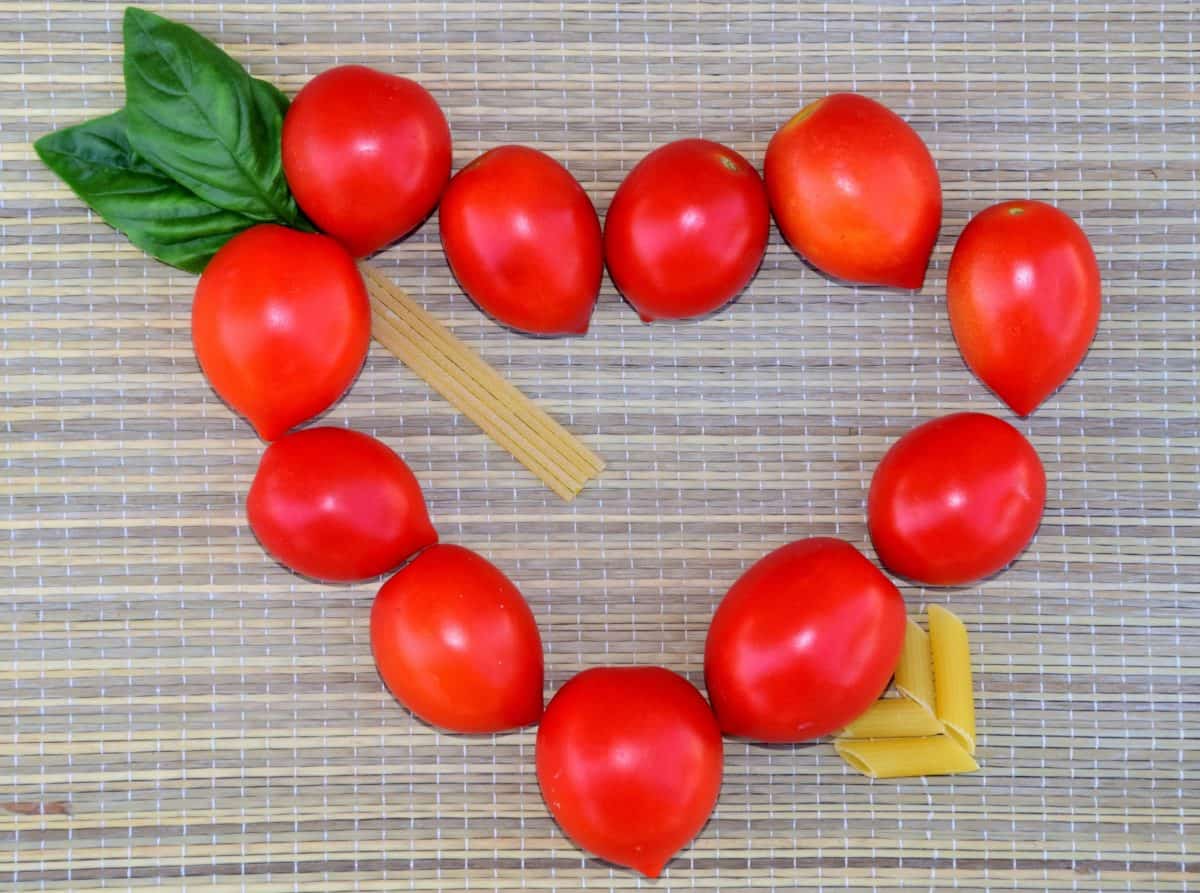Are you looking for a reason to start growing vegetables indoors? How’s – saving you from your weekly trip to the farmer’s market? Or the peace of mind you get from knowing that you’re consuming fresh and organic chemical-free veggies every day? It doesn’t get any better than that.
If you came across this post by accident, it’s entirely likely that you’re already sold on the idea of growing your own vegetables. So, we won’t get into that here. What you’re trying to figure out is the how of it all, especially if you don’t have a lot of space in your backyard… or even a backyard at all.
So, stick around. You’ll be surprised at how easy it is to grow your own fruits and veggies indoors – even if you live in an apartment. Let’s jump right into it, shall we?
Top Tips for Growing Vegetables Indoors
Right off the bat, it’s important to be clear on the types of vegetables you can grow indoors. If you were thinking of growing corn, cabbage, melons, or broccoli, sorry folks – those won’t fare well in any place other than the outdoors.
You can, however, grow loose leaf lettuce, arugula, spinach, and herbs like oregano, thyme, rosemary, peppermint, and sage. Tomatoes, peppers, beets, and baby carrots also do well with an indoor vegetable garden. Here are a couple of things you need to keep in mind when embarking on your indoor garden project.
1. Understand How Much Light Your Plants Need to Thrive and Survive

There’s a reason why this is first on our list. The key to successfully growing any plant indoors lies in understanding how much light they need. Remember, plants need sunlight to synthesize nutrients from the water and carbon dioxide they take in. This process is known as photosynthesis. This essentially means that no light equals no food – period.
The higher the number of windows present in the space where you grow your plants, the brighter the room will be. However, if you have tall buildings or nearby trees, obstructing the amount of light getting into your home, then you may need to consider getting LED grow-lights.
- 【Veg/Bloom switch】: Through a wide plant growth testing, the Veg/Bloom switch, was designed to provide proper light for plants in different growth stages to greatly increase your harvest. Veg switch is the blue LED and white LED only used for seed or seedling growth; Bloom switch is the red LED and white LED. For flowering, both Veg and Bloom switches can be used.
- 【Full spectrum】: KingLED LED grow light provides full spectrum lighting from 380 nm to 780 nm (including UV + IR) of natural light for plants needed of all growing stages from vegetables to flowers.
- 【Energy-saving technology】: Different from the traditional HPS ,Our LED plant grow lamp adopts a high-tech LED chip(double-chip 10W LED),Our 1000w LED lamp can replace the traditional 600w HPS to provide brighter light and save more electricity which also can save a lot of money for you.
- 【Advanced cooling system】: Multiple high-speed mute fans and upgraded aluminum radiators enable the light bulb to work at 50°F to 60°F that is lower than other lamps. In a lower temperatures, your plant won’t be burned which could increase your lighting time and promote plant growth.
- 【Professional Service】:3 years Professional Service and free return for 90 days. KingLED Laboratory has more than five years of sales with after-sale service team professional in design, sales and production for the best products and service for the majority of customers. If you have any questions, please contact us at any time, and we will reply within 24 hours and give you a satisfactory result.
Prices pulled from the Amazon Product Advertising API on:
Product prices and availability are accurate as of the date/time indicated and are subject to change. Any price and availability information displayed on [relevant Amazon Site(s), as applicable] at the time of purchase will apply to the purchase of this product.
Ordinary light bulbs won’t suffice since human and plant perception of light is completely different. It needs to be within the right spectrum for photosynthesis to occur. To increase or decrease the LED light exposure to your plants, move the lamp closer to them and vice versa, respectively.
If possible, pick a spot for your indoor garden that gets a generous amount of direct sunlight. The magic number is six hours of direct sun exposure per day.
2. Pick Proper Pots for Indoor Vegetable Gardening
Where you grow your vegetables also plays an important part in how well they do. Pick a large enough pot that can adequately hold seedlings until they transform into full-grown host plants.
The size of the pot will, in large part, be determined by how much root space the plants require. The roots of salad greens and herbs, for instance, don’t grow as deep as those of other plants like a cherry tomato plant. So, keep this in mind as well.
The other thing you need to consider is the material of the pot in question. While there’s nothing inherently wrong with using clay pots, they tend to dry out at a much faster rate than plastic, metal, wooden, ceramic, or nonwoven plant fabric containers.
- STURDY FABRIC MATERIAL: Made of 300g thickened nonwoven fabric, these pots are moderately permeable, environmentally friendly, and BPA-free
- GREAT DRAINAGE: Nonwoven fabric means the pots do not retain excess water, allowing your roots to breathe, translating to a healthier, more vigorous growth
- DURABLE, REINFORCED HANDLES: While the competition uses flimsy handles that are a continuation of the same fabric the pot is made from, we use serging stitches to sew handles onto the pot so they can support a full bag of soil
- PORTABLE BAGS: Both heavy-duty handles and rugged material means you can move bags full of soil and plants with ease
- USE IT FOR YEARS: Bags prevent circling root structure. Combined with pruning and trimming roots, these bags can be reused for years. Comes with a 1-year warra
Prices pulled from the Amazon Product Advertising API on:
Product prices and availability are accurate as of the date/time indicated and are subject to change. Any price and availability information displayed on [relevant Amazon Site(s), as applicable] at the time of purchase will apply to the purchase of this product.
It is always better to pick pots for your container garden that have a higher-than-average water retention capacity since it means that your veggies will have adequate moisture, which is a vital part of their growth process.
3. Create a Great Plant-Growing Medium

Well, that’s just a fancy name for soil. However, because you’re growing your veggies indoors, using regular soil won’t suffice if you’re hoping to get the best possible results from your gardening endeavors. You need to go an extra step to ensure that you use a soil recipe that has all the vital nutrients your plants need to thrive.
A great one you can use involves mixing an indoor potting mix, peat moss, or compost, with coarse sand and garden soil. That way, you have a potting soil mixture that’s guaranteed to drain well. Remember to water the soil of your garden bed regularly, preferably in the morning, but don’t overdo it to the point it becomes waterlogged.
On the flip side, letting the soil dry out may result in a bitter vegetable plant, and no one wants that! If all this sounds tedious to you and you prefer a more hands-off approach, consider getting a watering globe to help keep the soil moist without having to be too bothered with it.
- PLANT-WATERING SYSTEM PERFECTION: Wyndham House’s 3-piece Watering Globe Set is a remarkably simple and beautifully decorative way to make sure flowers and plants stay sufficiently hydrated all throughout the year—and especially while you’re traveling!
- DEPENDABLE CONSTRUCTION & RELIABLE DELIVERY: Featuring 3 strikingly colorful individually-crafted hand-blown glass bulbs, our vibrant watering globes measure 12” long with a 3”-bulb diameter—which ship in plenty of sturdy Styrofoam
- A THOUGHTFUL GARDENING GIFT: Incredibly efficient and dynamically practical, our gorgeous watering globes make the gardening chores of anyone with a green thumb, budding gardeners and even lifelong horticulturists easier and more enjoyab
Prices pulled from the Amazon Product Advertising API on:
Product prices and availability are accurate as of the date/time indicated and are subject to change. Any price and availability information displayed on [relevant Amazon Site(s), as applicable] at the time of purchase will apply to the purchase of this product.
4. A Little Fertilizer Goes a Long Way
To boost the nutrient levels that your plants are getting, add some organic fertilizer to enhance their growth. You want to go for something that releases its nutrients at a slower rate to make them available to your plants over a prolonged period. Seaweed meal, in particular, works like a charm.
5. Get the Dwarf Varieties of the Plants You Want to Grow

When growing vegetables indoors, space is a luxury you can’t afford to waste. So, instead of growing the traditional varieties of crops, get their miniature versions. It not only gives you the space you need to squeeze-in lots more veggies in the area you have, but they are also equally as tasty and healthy.
Did we mention that they mature in a fraction of the time it takes conventional plants to? It’s a win-win any way you slice it. Some dwarf-sized veggie suggestions you should consider in your indoor gardening project include:
- Dwarf cherry tomatoes – Takes 45 to 70 days to harvest
- Dwarf cucumbers – Takes 45 to 60 days to harvest
- Dwarf peppers – Takes 55 to 90 days to harvest
- Dwarf mini eggplant – Takes 50 to 75 days to harvest
- Dwarf summer squash – Takes 49 to 60 days to harvest
No More Excuses
If you wanted to take up gardening as a hobby but didn’t have the space to do it before, growing fresh vegetables indoors is now the latest trend to hit the gardening world. So, no more excuses. Jump on that bandwagon and put your green thumb to work!
Do you want a free pair of gardening gloves to get you jump-started on your project? Sign up for our newsletter and get entered into our monthly draw give away!







